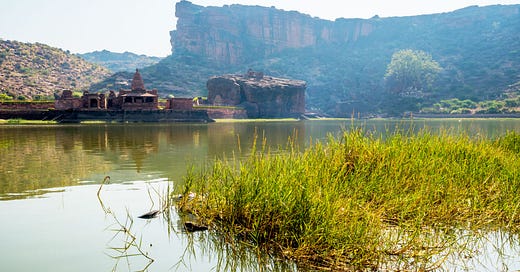How to Use Foreground Interest in Landscape Photography
Create Depth, Drama, and Visual Connection in Every Frame
When you look at a breathtaking landscape photograph—one that pulls you in, holds your gaze, and invites you to step into the scene—it almost always has one powerful element in common: a strong foreground.
Foreground interest is not just a compositional trick; it’s a storytelling tool. It gives your images depth, context, balance, and emotional impact. In this article, let’s explore how to use foreground interest effectively in your landscape photography to elevate your frames from good to unforgettable.
🌄 Why Foreground Interest Matters
Foreground elements serve multiple purposes in landscape photography:
✅ Add depth by creating a sense of three-dimensionality in a two-dimensional image
✅ Lead the viewer’s eye into the scene and toward the main subject
✅ Anchor the image with something familiar, relatable, or tactile
✅ Balance composition by filling negative space and creating visual harmony
✅ Enhance storytelling by linking the foreground with the background subject
Whether it’s a rock, flower, fallen log, puddle, fence, or texture, a good foreground invites the viewer into your world.
🧠 Compositional Power: Foreground to Background Flow
A photograph with a strong foreground creates a natural visual journey. It gives the eye a place to start before moving deeper into the frame. Think of it as a staircase guiding the viewer from the front of the image to the back—each step revealing more.
Place foreground elements using the Rule of Thirds
Use leading lines (like rivers, paths, shadows) starting from the foreground
Consider diagonal compositions that move from corner to corner
Look for natural frames like arches, tree trunks, or overhanging branches
📷 Best Camera Settings for Foreground Emphasis
Capturing a well-defined foreground typically requires:
📌 1. Narrow Aperture (High f-stop)
Use f/8 to f/16 to ensure sharpness from the front to the back of your image (deep depth of field). This helps keep both the foreground and background in focus.
📌 2. Use a Wide-Angle Lens
Lenses like 16–35mm or 24mm primes exaggerate the foreground, making it more prominent and dramatic.
📌 3. Focus One-Third Into the Scene
This is a good rule for achieving maximum depth of field when using a narrow aperture.
📌 4. Use a Tripod
A sturdy tripod helps maintain sharpness when using slower shutter speeds in low light or at high f-stops.
🪨 Ideas for Foreground Elements in Landscapes
You don’t need spectacular foregrounds—just interesting ones. Some ideas include:
🌿 Wildflowers, grass, or textured plants
🪨 Rocks, pebbles, or driftwood
💧 Reflections in puddles, water pools, or glassy lakes
🌾 Fallen trees, logs, or leaves
👣 Footprints, animal tracks, or man-made patterns
🚪 Old gates, fences, ladders, or windows for framing
Sometimes, just a small patch of detail in the foreground can transform an otherwise flat image into something visually rich.
🎨 Creative Tips for Foreground Success
Get low – Kneel, squat, or even lie down to emphasise foreground textures and details.
Shoot during golden hour – Soft light creates beautiful shadows that add depth and drama.
Include story elements – Human touches like an old boot, a lantern, or a bicycle can connect the viewer emotionally.
Balance vs. tension – Sometimes, placing a dynamic or contrasting element in the foreground (like a bright flower against dark mountains) adds drama.
🔁 Post-Processing Tips
Apply clarity and texture adjustments to enhance foreground detail
Use local adjustment brushes in Lightroom or Camera Raw to subtly increase contrast or sharpness
Consider vignetting to guide focus toward the foreground element
Ensure the white balance and tones are consistent from foreground to background
❌ Common Mistakes to Avoid
Cluttering the foreground with too many distracting elements
Overpowering the background with an oversized foreground subject
Not checking sharpness or focus in the foreground
Using a wide-angle lens without properly anchoring the foreground
Remember: Simplicity and clarity are your allies.
🌟 Final Thoughts
Foreground interest is a powerful composition tool that can transform your landscape photography into compelling visual stories. It creates connection, depth, and a pathway for the eye and imagination. Once you learn to see with this principle in mind, every location becomes an opportunity to tell a richer story.
🚀 Ready to Take Your Photography to the Next Level?
Join my photography learning community where we dive deep into topics like:
Mastering landscapes and creative compositions
Using light and shadow for drama
Storytelling through the lens
Weekly tips, critiques, and online classes
👉 Subscribe to this blog and stay updated on upcoming courses and workshops.
Together, let’s learn the art and soul of photography—one frame at a time. 📸✨





